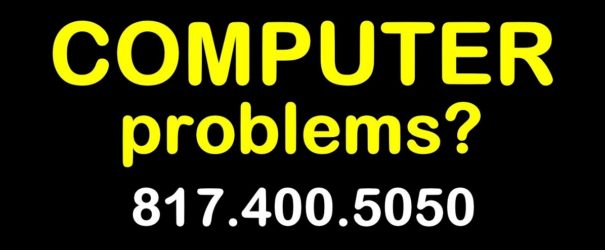Picture this: you’re deeply focused on your computer, working hard, when it suddenly freezes. You try to fix it, but then you realize the problem. Your computer is infected with malware. This can be worrying and scary, but there’s no need to panic. You can get your computer back on track with a few steps.
In our quick guide, we’ll show you how to clean up a computer that’s been infected. You don’t have to be a tech expert to follow these steps. They will help you feel more in control as you remove the bad software from your system. Let’s get started and make your computer safe and fast again.
Understanding Malware Infections
It’s key to know about malware before learning how to clean a computer. Learn about signs like slow performance, odd crashes, and pop-ups. This way, you can keep your computer safe and avoid future problems.
Signs of Malware Infections
- Sluggish computer performance
- Unusual system crashes or freezes
- Unexpected pop-up messages or ads
- Unexplained changes in browser settings
- Unauthorized access to personal information
Seeing these signs means you should act fast. This protects your computer and info.
Malware Detection Techniques
Detecting malware uses different methods:
- Signature-based detection checks for known malware to remove it.
- Heuristic analysis looks at file behavior to find potentially harmful ones.
- Behavioral detection watches file and program actions to find anything suspicious.
- Machine learning finds malware by spotting unusual patterns.
Using all these ways, security tools can find and delete malware.
Importance of Computer Security Measures
Having strong security is vital against malware. Update antivirus, your system, and use strong passwords. Firewalls and cautious clicking also help protect your computer.
Follow these steps to make your computer safer. This lowers the chance of malware and keeps your data secure.
Step 1: Isolate the Infected Computer
The first step in getting rid of malware is isolating the infected computer. This keeps the malware from spreading to other devices. It’s crucial to stop the malware’s spread.
To isolate the infected computer:
- Disconnect from the internet: Pull the network cable from your computer or turn off Wi-Fi. This keeps the infected computer away from the internet’s malware sources.
- Disconnect from other devices and networks: Cut off any connections to printers, shared drives, or networks. This step lowers the risk of spreading the malware.
By isolating the infected computer, you make the environment safe for removing the malware. This helps protect other devices and systems.
Step 2: Use Reliable Antivirus Software
After finding your infected computer, the next important step is using good antivirus software. Pick antivirus software that scans and removes malware effectively.
Choose from well-known antivirus brands. They are trusted for their power against malware. Some top picks are:
- Norton Antivirus: Offers real-time protection against various threats, including ransomware.
- Bitdefender Antivirus Plus: Has strong malware detection and easy-to-use features.
- Kaspersky Total Security: Provides a wide range of protection, including from phishing.
After installing the antivirus of your choice, scan for malware:
- Open the antivirus and find the scanning options.
- Choose between a full system scan or a scan for specific parts.
- Start the scan to let the software check your computer fully.
- If it finds a threat, let the software remove or isolate it.
- Remember to update your software often to keep it strong against new threats.
Having good antivirus and scanning your system often helps clean and protect your computer. Choose a well-known antivirus, scan regularly, and keep updates to stay safe.
Step 3: Remove Malicious Files and Programs
After scanning with your antivirus, it’s time to act fast. Remove the malware found on your computer. This way, you can be sure your system is clean again.
Here’s how you can get rid of the malware:
- Delete Infected Programs: First, find and delete any programs that the malware infected. It’s key to do this to protect your system. Head to your Control Panel or Settings to find and uninstall these programs.
- Uninstall Suspicious Software: Besides infected programs, there might be suspicious software too. This software might have come with the malware or been installed secretly. Use the same method mentioned earlier to get rid of this software.
- Clean Registry Entries: Malware could have left bad entries in your computer’s registry. These could mess up your system or let the malware return. Cleaning the registry is important. Use a trusted tool or do it manually if you’re skilled. But be careful not to make a mistake.
- Scan for Lingering Files: Even after deleting programs and cleaning the registry, some malware files might linger. Scan your system again with your antivirus to make sure all the bad stuff is gone.
By deleting infected programs, uninstalling suspicious software, and cleaning the registry, you get rid of the malware. This is vital for making your computer safe and faster again.
Step 4: Update and Strengthen Security Measures
After cleaning your computer from viruses, the next key step is to upgrade security. Update your security software, system, firewall settings, and turn on auto updates. This lowers the chance of malware attacks in the future.
Always update your security software to stay ahead of new online threats. This includes antivirus and anti-malware tools. Check for updates often to keep your protection current.
It’s just as critical to update your system regularly. These updates fix security flaws that hackers could use. Doing this improves your computer’s defenses.
Make your firewall stronger for added protection. A firewall acts as a guard, managing what goes in and out of your network. Setting it to block bad sources but allow good ones is a smart move.
Keep things easy by turning on auto updates. This ensures your security is always current without manual checks. Most systems and security software have this feature.

Recent Comments